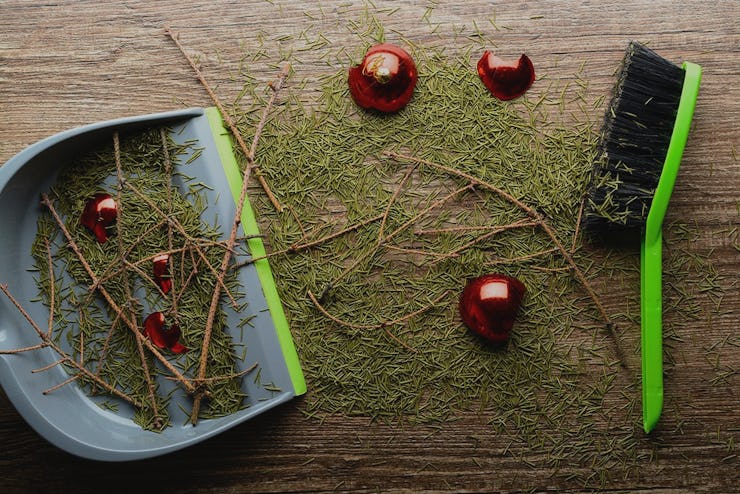Now that Christmas is done, what on earth should you do with the tree?
It’s the most wonderful time of the year: deciding what to do with your Christmas tree.

It’s the most wonderful time of the year: deciding what to do with your Christmas tree.
If you bought a plastic tree, you might have already made the commitment to store and reuse it next year. However, if you were just looking at the greenhouse gas credentials of Christmas tree options, a full life cycle analysis indicates you’ll need to reuse that plastic tree at least 20 times to break even. So you had better store your plastic tree really carefully (even if you are prepared to accept it might be a little bedraggled by 2038, and no longer even in style).
What about living or cut trees? Do you throw them out, stash them in the backyard for a midwinter bonfire, or start a compost heap? You might be surprised to learn that your real Christmas tree can bring you all sorts of joy both before and beyond December 25.
Selecting a real Christmas tree as a family is an enjoyable annual ritual for many, but actually, the tree itself can also directly reduce stress. Yes, the presence of natural living things — and even objects made from natural things like wood — has been demonstrated to improve physiological well-being. The more you have in your home or office, the more likely you are to express satisfaction with your work and well-being.
So, having a living or a cut Christmas tree in a wooden planter box, positioned in front of a large window, over the Christmas period would have allowed you to gain the full stress-reduction effects, reduce your greenhouse gas footprint, and enjoy the festive season.
Plastic trees don’t give the same benefits as real plants.
The love you give (to trees)
The improvements in well-being associated with nature-based objects are part of what is now termed biophilia. It is not only plants or trees in a pot in your room that can promote these improvements. Wooden furniture, natural light, nature seen through large windows, and even images of nature can all combine to enhance the biophilic experience.
But if images of nature can help with biophilia, wouldn’t a realistic plastic tree also work? In a recent study, my colleagues and I found that photographs of plants could indeed result in volunteers responding that they felt positive emotional, physiological, cognitive, and behavioral responses.
However, when exposed to the real plants that were the subject of the photographs, the response was even more positive, and people went out of their way even just to walk past the plants. Plastic Christmas trees are generally more “symbolic” than realistic, and it is unlikely that these could directly induce any feelings of biophilia.
Cut trees, and even live trees left inside too long, will lose leaves or needles and eventually need to be discarded. But even these processes may engage aspects of biophilia if done sensitively.
Dead needles and twigs can be crushed and used as mulch, and if the tree stem is too big to break into mulchable parts, you might be able to whittle or craft a small wooden artifact or piece of jewelry. Composting or reusing the material produced by a once-living Christmas tree, as a part of the Christmas tradition, would certainly increase the biophilic response.
While out in the garden or veranda spreading a little mulch, you could also begin a new tradition — planting next year’s living Christmas tree in a pot! Almost any tree could be used as a living Christmas tree, depending on how big you want it and how much tinsel or popcorn string you plan on wrapping around it.
However, there are a number of native species (like the Norfolk Island Pine) which work well as Christmas trees, and which you might be able to plant in your yard when they get too big.
Growing your own tree, complete in its little wooden planter box on your veranda or balcony, will give you a hit of biophilia and a glimpse of next Christmas every day.
This article was originally published on The Conversation by Cris Brack. Read the original article here.